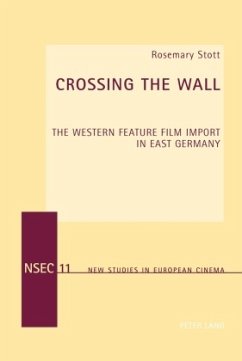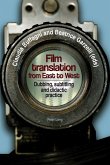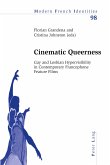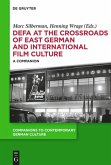More than twenty years after its collapse in 1989, the Berlin Wall remains a symbol of the vigour with which communist East Germany kept out the 'corrupting influences' of neighbouring West Germany. However, despite the restrictions, a surprising number of artistic works, including international films, did 'cross the Wall' and reach audiences in the wide network of cinemas in East Germany.
This book takes a fresh look at cinema as a social and cultural phenomenon in the German Democratic Republic (GDR) and analyses the transnational film relations between East Germany and the rest of the world. Drawing on a range of new archival material, the author explores which films were imported from the West, what criteria were applied in their selection, how they were received by the national press and film audiences, and how these imports related to DEFA (East German) cinema. The author places DEFA films alongside the international films exhibited in the GDR and argues that film in East Germany was actually more transnational in character than previously thought.
This book takes a fresh look at cinema as a social and cultural phenomenon in the German Democratic Republic (GDR) and analyses the transnational film relations between East Germany and the rest of the world. Drawing on a range of new archival material, the author explores which films were imported from the West, what criteria were applied in their selection, how they were received by the national press and film audiences, and how these imports related to DEFA (East German) cinema. The author places DEFA films alongside the international films exhibited in the GDR and argues that film in East Germany was actually more transnational in character than previously thought.
«(Hier) liegt eine wichtige und in hohem Masse interessant zu lesende Publikation vor, die bisher bestehende Ungleichgewichte in der Erforschung von DDR-Film und -Kultur zu korrigieren vermag. Hervorzuheben ist insbesondere, dass Rosemary Stott den Begriff der Zensur um Mechanismen der Distribution und Vorführung erweitert. [...] Der Studie gelingt es somit sichtbar zu machen, in welch hohem Mass die DDR-Kultur nicht nur von Fernseh-, sondern auch von Kinofilmen westlicher Länder beeinflusst wurde - und dies, obwohl die ideologischen Grundprinzipien der Filmauswahl bis zuletzt ihre Gültigkeit behielten.» (Anne Barnert, sehepunkte)
«'Crossing the Wall: The Western Feature Film Import in East Germany' (...) offers a fascinating insight into the transnational film relations between East Germany and the rest of the world. Based on newly available archive material, [Stott] explores the cultural policy surrounding the import of West German, American and British feature film in the Honecker era, including their reception. She argues that East German audiences were neither isolated from the Western media, nor were Western products their sole source of entertainment, rather that foreign and domestic media existed in 'contrasted dialogue'.» (Sara Jones, The Year's Work in Modern Language Studes 73, 2013)
«'Crossing the Wall: The Western Feature Film Import in East Germany' (...) offers a fascinating insight into the transnational film relations between East Germany and the rest of the world. Based on newly available archive material, [Stott] explores the cultural policy surrounding the import of West German, American and British feature film in the Honecker era, including their reception. She argues that East German audiences were neither isolated from the Western media, nor were Western products their sole source of entertainment, rather that foreign and domestic media existed in 'contrasted dialogue'.» (Sara Jones, The Year's Work in Modern Language Studes 73, 2013)








